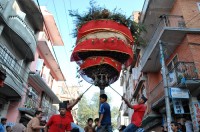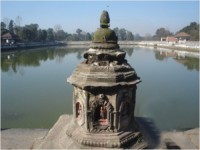The Living Goddess – Kumari
Nepal is rich in religious heritage as it houses many temples, chaityas and gumbas. It has a distinct feature that makes it unique to the world i.e. the presence of the Living Goddess Kumari. The word Kumari refers to an unmarried girl who is yet to reach her puberty.
Standing proudly at the premises of the Hanuman Dhoka Durbar Square in Kathmandu, is the house of the living goddess. Known as Kumari Ghar, the house accommodates the living goddess within. Although Nepal has several Kumaris in different cities, the best known is the Royal Kumari who resides here in Kumari Ghar. The girl is provided all the basic necessities and facilities within the confines of the Kumari house. Once she enters the house, she is not allowed to go out of the house except on certain occasions when she is supposed to give her blessings. She is worshiped by Hindus and Nepali Buddhists as well.
A Kumari is believed to be an incarnation of the Hindu goddess Taleju, (a form of Durga). As the belief goes, her body is abandoned by the goddess when she menstruates or sometimes have massive loss of blood from the body due to injury or serious illness.
The girl is selected from the Shakya clan of the Newar community. Certain rigorous procedures are to be followed during the selection process. As soon as the girl (Kumari) nears her puberty, her successor is searched for. Only a young girl is selected because of their purity and chastity which are the characteristics of goddess Durga.
In past, Kumaris were not allowed to continue their studies or get married even after they no longer carried the title. It was believed that their husbands were doomed to die within six months of marriage by coughing up blood. Nevertheless, with the effort of human rights groups, this scenario has changed a lot. Now they go to schools and get regular education like the normal girls. However, as long as they hold the title of Kumari, they are confined within the house with private tutors and playmates with few exceptions.






